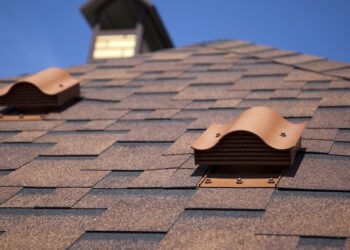The Importance of Proper Roof Ventilation for Your Home
Proper roof ventilation is one of the most important, and most overlooked, aspects of a healthy roofing system. It helps regulate temperature, manage moisture, and extend the life of your roof. Without it, your attic can trap heat and humidity, leading to higher energy bills, mold growth, and premature roof deterioration.
At Precison Roofing & Gutters, we specialize in designing and installing efficient roof ventilation systems for homes throughout Portland, Vancouver, and the surrounding Pacific Northwest. This guide explains how roof ventilation works, the types of vents available, and how to spot the warning signs of poor ventilation.
What Is Roof Ventilation?
Roof ventilation is the process of allowing air to flow naturally through the attic space. It uses intake and exhaust vents to create a continuous circulation of air, drawing in cooler, drier air while pushing out warm, moist air.
A well-ventilated attic keeps your home comfortable year-round and helps prevent damage to the roofing materials. In the Pacific Northwest, where seasonal rain and humidity are common, proper ventilation is critical for protecting both your roof and your indoor air quality.
The Benefits of Proper Roof Ventilation

- Extends Roof Lifespan
Heat and moisture trapped in the attic can cause shingles to warp and wood decking to rot. A balanced ventilation system prevents excessive heat buildup and moisture accumulation, helping your roof last longer. - Prevents Mold and Moisture Damage
Inadequate airflow can cause condensation, which may lead to mold, mildew, or structural damage. Roof ventilation helps control humidity and protects insulation and framing materials. - Improves Energy Efficiency
Proper airflow reduces the strain on your HVAC system by keeping attic temperatures stable. During summer, it keeps hot air from radiating into your living space; during winter, it prevents ice dam formation along roof edges. - Regulates Indoor Comfort
With a balanced attic temperature, your home stays more comfortable, reducing the need for constant heating or cooling adjustments.
Types of Roof Vents
There are several types of roof ventilation systems, each designed to meet different needs and roof structures:
1. Ridge Vents
Installed along the peak of your roof, ridge vents provide continuous exhaust ventilation. They blend seamlessly with the roofline, offering excellent airflow without affecting your home’s appearance.
2. Soffit Vents
Located under the roof’s eaves, soffit vents serve as the intake system, allowing cool air to enter the attic. When paired with ridge vents, they create a balanced, efficient ventilation system.
3. Gable Vents
Mounted on the exterior wall near the roof peak, gable vents allow hot air to escape from the attic. They’re often used in combination with other vent types for better airflow.
4. Roof or Box Vents
These static vents are installed near the roof ridge to let hot air escape. They’re ideal for smaller roof areas or where ridge vents can’t be used.
5. Powered Attic Vents
Electric or solar-powered fans actively pull hot air out of the attic. They’re especially useful for homes with limited natural airflow or high humidity levels.
Signs of Poor Roof Ventilation
If your roof or attic isn’t properly ventilated, you may notice:
- Uneven temperatures between rooms or floors
- Excessive attic heat, especially during summer
- Condensation, damp insulation, or mold growth
- Curling or deteriorating shingles
- Ice dams form in winter
- Higher energy bills than usual
Addressing ventilation issues early can save you from costly roof repairs and prevent long-term structural damage.
Roof Ventilation Services in Portland & Vancouver
At Precision Roofing & Gutters, we provide professional roof ventilation installation, repair, and inspection services to help homeowners maintain strong, efficient roofing systems. Whether you’re replacing your gutter setup, roof, or looking to improve attic airflow, our experienced team can design a custom ventilation solution to protect your home from heat buildup, excess moisture, and premature roof damage.
Call us today at (503) 926-6194 or request a free roof inspection online. Our roofing specialists will ensure your home stays comfortable, energy-efficient, and well-protected throughout the year.
